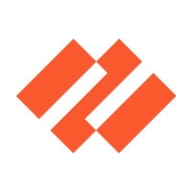

Palo Alto Networks Cortex XSOAR and AWS Security Hub compete in the dynamic security orchestration and cloud security management market. Cortex XSOAR appears to offer a more robust solution for integration and automation, catering effectively to mature SOC processes, while AWS Security Hub excels in native AWS ecosystem integration.
Features: Palo Alto Networks Cortex XSOAR offers strong automation capabilities, diverse integrations, and a vast library of customizable playbooks. It also benefits from stability and scalability, seamlessly integrating with third-party tools. AWS Security Hub boasts effective integration with AWS services, ensuring comprehensive cloud security management, especially within AWS ecosystems, and provides centralized alerts and analytics for AWS workloads.
Room for Improvement: Cortex XSOAR users point out the high cost and suggest improvements in integration with non-security and on-premise solutions along with more flexible customization options. AWS Security Hub could enhance integration with open-source and non-AWS solutions, improve its dashboard usability, and reduce false positives through better alert management.
Ease of Deployment and Customer Service: Palo Alto Networks Cortex XSOAR supports diverse deployment environments, including public, on-premises, and private clouds. However, its technical support receives mixed reviews. AWS Security Hub thrives in public cloud environments, with seamless AWS integration and positively rated technical support that aligns with AWS's customer service standards.
Pricing and ROI: Cortex XSOAR's high costs have been noted, especially post-acquisition, yet its automation may justify the expense for larger enterprises. AWS Security Hub is more budget-friendly with a flexible pay-as-you-go model, offering satisfactory ROI for AWS-reliant users while lacking cost competitiveness in non-AWS settings.
| Product | Market Share (%) |
|---|---|
| Palo Alto Networks Cortex XSOAR | 9.6% |
| AWS Security Hub | 8.1% |
| Other | 82.3% |


| Company Size | Count |
|---|---|
| Small Business | 10 |
| Midsize Enterprise | 5 |
| Large Enterprise | 12 |
| Company Size | Count |
|---|---|
| Small Business | 19 |
| Midsize Enterprise | 8 |
| Large Enterprise | 24 |
AWS Security Hub is a comprehensive security service that provides a centralized view of security alerts and compliance status across an AWS environment. It collects data from various AWS services, partner solutions, and AWS Marketplace products to provide a holistic view of security posture. With Security Hub, users can quickly identify and prioritize security issues, automate compliance checks, and streamline remediation efforts.
The service offers a range of features including continuous monitoring, threat intelligence integration, and customizable dashboards. It also provides automated insights and recommendations to help users improve their security posture. Security Hub integrates with other AWS services like Amazon GuardDuty, AWS Config, and AWS Macie to provide a unified security experience. Additionally, it supports integration with third-party security tools through its API, allowing users to leverage their existing security investments.
With its user-friendly interface and powerful capabilities, AWS Security Hub is a valuable tool for organizations looking to enhance their security and compliance posture in the cloud.
Palo Alto Networks delivers a complete solution that helps Tier-1 through Tier-3 analysts and SOC managers to optimize the entire incident life cycle while auto documenting and journaling all the evidence. More than 100+ integrations enable security orchestration workflows for incident management and other critical security operation tasks.
Palo Alto Networks Cortex XSOAR is a piece of Security Orchestration, Automation, and Response software that redefines what it means for a program to orchestrate security in an automated manner. It is a next-generation solution that offers all of the features of dozens of siloed security operations center tools in one place. Cortex XSOAR combines case management, automation, real-time collaboration, and threat intelligence management to create a platform that can handle all aspects of system security. Teams that make use of Cortex XSOAR can expect to cut the number of issues that they will have to deal with by 75%. At the same time, the speed at which they resolve those issues that slip through will rise by 90%.
Cortex XSOAR ensures that all of the IT and security tools that you employ function as a unified system. It does this by employing hundreds of integrations that allow you to run a wide variety of programs at once without ever worrying about them interfering with each other. These integrations are limited only by your imagination. They can be used immediately as they are, if that is what you need. However, they can also be customized according to the requirements of your system. This approach provides you with the maximum levels of both flexibility and utility.
The model that this platform uses is based on a machine learning algorithm. The level of automation allows you to provide more than an unchanging and inflexible blanket of coverage. Cortex XSOAR takes all of the data that it gathers and uses it to expand its protective capabilities. This creates recommendations that you can use to create a threat playbook that can be deployed uniformly throughout your organization.
Benefits of Palo Alto Networks Cortex XSOAR
Some of Palo Alto Networks Cortex XSOAR’s benefits include:
Reviews from Real Users
Palo Alto Networks Cortex XSOAR’s centralized monitoring interface and automation are two features that help it stand out. This might help explain why one quarter of the Fortune 500 companies choose Palo Alto Networks Cortex XSOAR over the competition.
Peerspot users note the effectiveness of these features. One user wrote, “We were looking for a single pane of glass type of solution that would allow us to physically be in one appliance - be able to work in concert with other servers that we have within our environment. We wanted orchestration and automation. The single pane of glass was the most important part.” Another noted, "The automation part and the playbook creation part are awesome. The way it is responding to the customers and incidents is also very good. In the SOC environment, I guess it will carry out around 50% of the work."
We monitor all Security Orchestration Automation and Response (SOAR) reviews to prevent fraudulent reviews and keep review quality high. We do not post reviews by company employees or direct competitors. We validate each review for authenticity via cross-reference with LinkedIn, and personal follow-up with the reviewer when necessary.